At the last CompTIA Community Meeting, we asked the attendees to give us their observations from 2020, and their predictions for 2021.
These nine charts summarise the feedback across five aspects:
- Revenue growth
- Staffing numbers
- Working from home
- Technology
- Business challenges
1. Revenue Growth
Overall, the impact on revenue in 2020 was mixed with 44% of partners reporting a slight or significant increase, 40% reporting a slight or significant decrease, and 17% reporting no significant change.
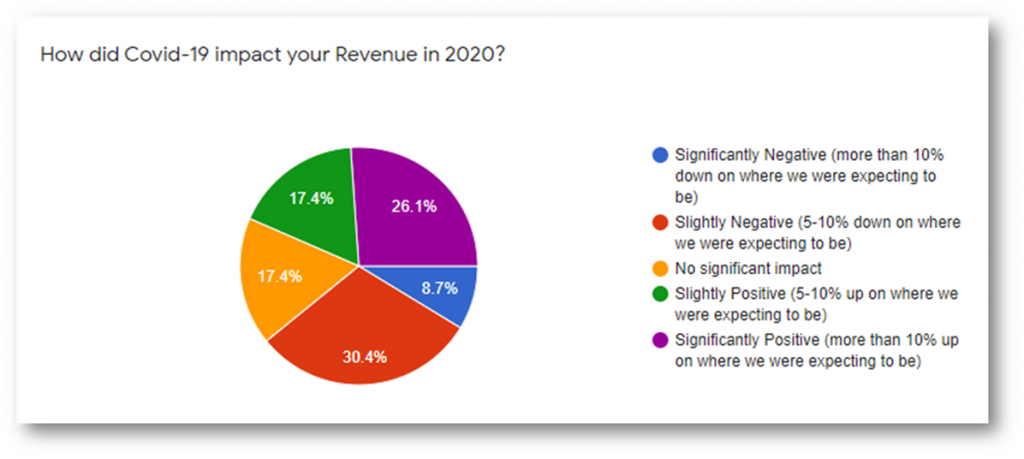
This was largely a function of:
- the market sectors they operated in (eg. partners servicing sectors like Govt and Healthcare fared better than partners servicing travel and hospitality)
- their product offering (eg. partners with a security offering and technologies that supported working from home saw a significant increase in business)
- business model (eg. partners with a XaaS offering fared better than those selling technology using a traditional CapEx reseller model)
Businesses with multiple different service offerings were able to pivot – if one aspect of their business was impacted, another one picked-up.
For 2021, the outlook was significantly more optimistic with 50% of partners expecting a slightly positive (5-15%) increase in revenue over 2020, and 27% expecting more than 15% increase.
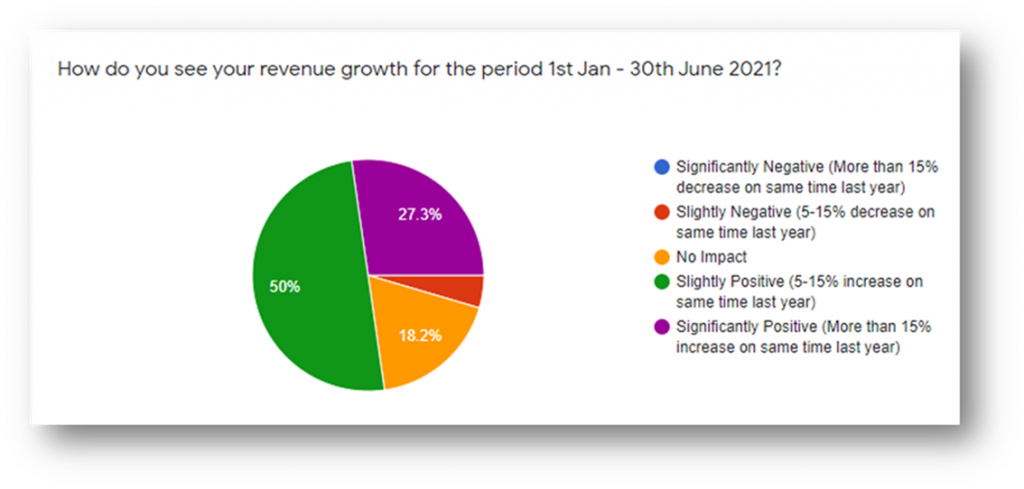
2. Staffing Numbers
The effects of COVID-19 were certainly felt by partners, with 50% reporting that they reduced their staff numbers.
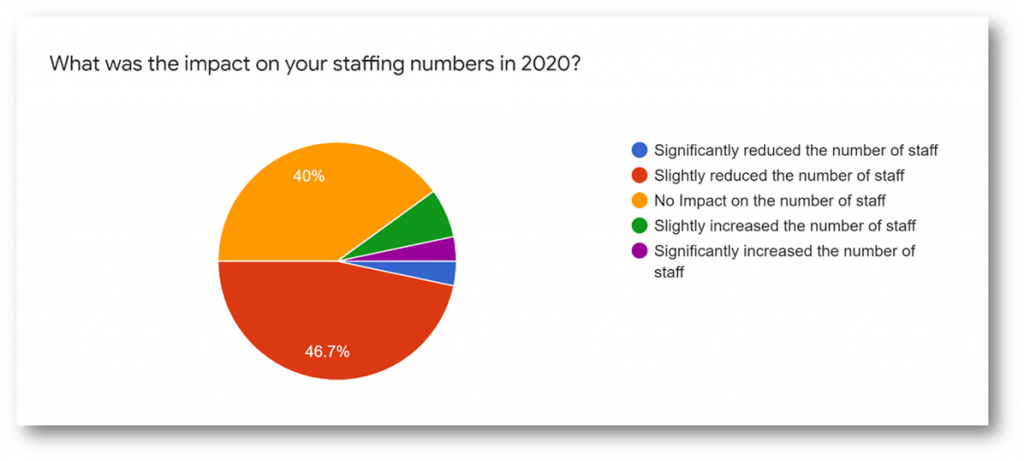
However, this trend appears to be significantly reversed with 70% of partners indicating they expected to increase their staff numbers in 2021.
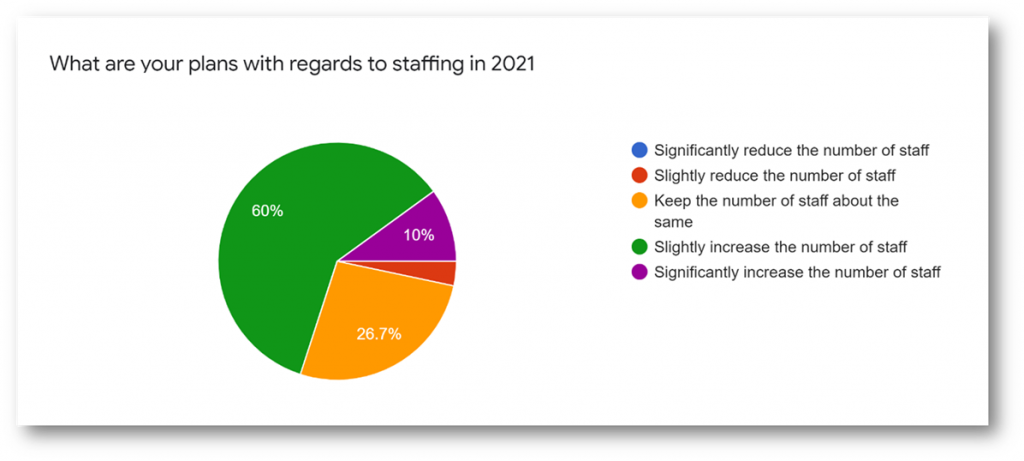
3. Working From Home
With the vast majority of organisations asking their employees to work from home, we believe 2020 will be remembered as the year that changed the way we work in future.
For many people, the home became their office with 50% of attendees reporting that they spent 3-4 hours a day on virtual conference calls and 23% spending 5-6 hours a day. Is it any wonder the term “Zoom Fatigue” was coined!
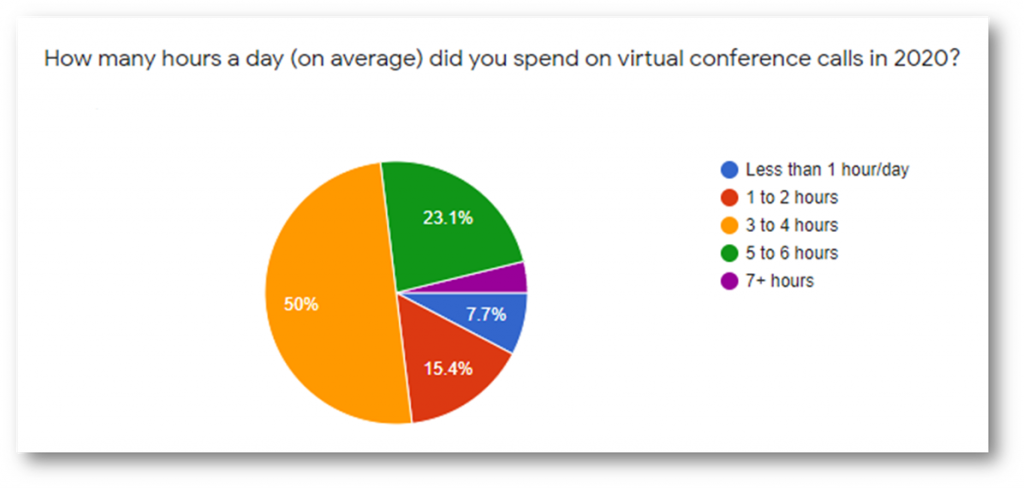
However, it appears that after 12 months, the idea that it was possible to do meaningful business over video conferencing became socially accepted. People worked out how to adapt to the Work From Home lifestyle (by including time with families, walking the dog, etc) with every participant indicating they planned to have at least 1 day a week working from home (with 15% saying they would only come into the office if they absolutely have to).
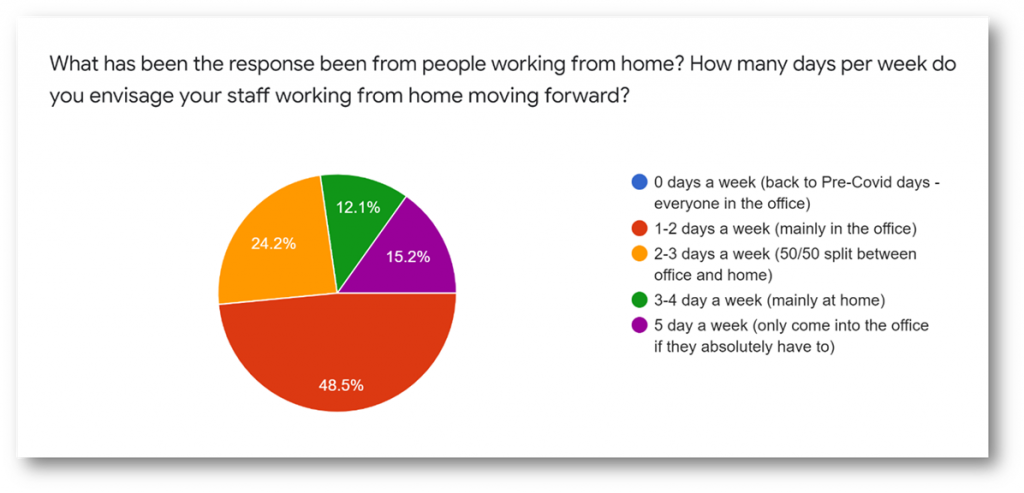
Not surprisingly, the majority of work was done remotely, with 82% of participants engaging with customers and partners via phone or a virtual conferencing platform.
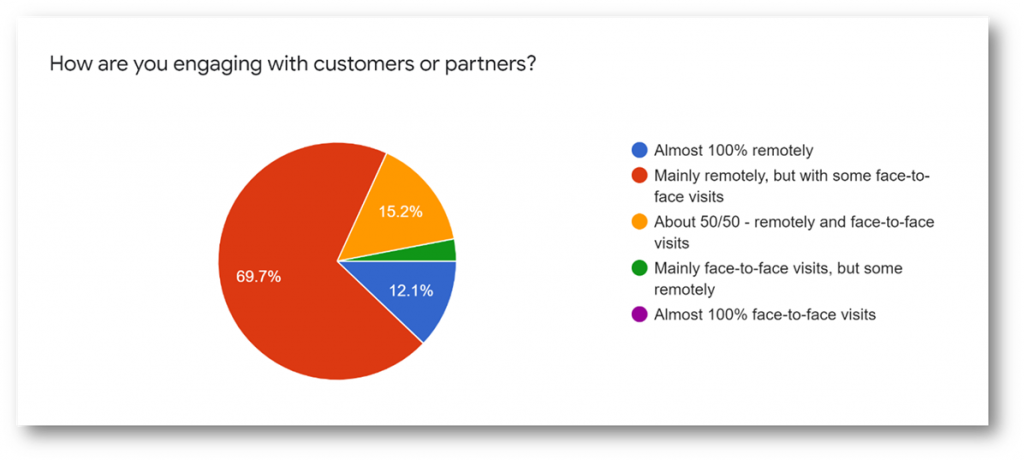
However, what was very interesting is that by March 2021, 73% of participants claimed that the remote model was as, or more, effective in reaching and servicing customers/partners.
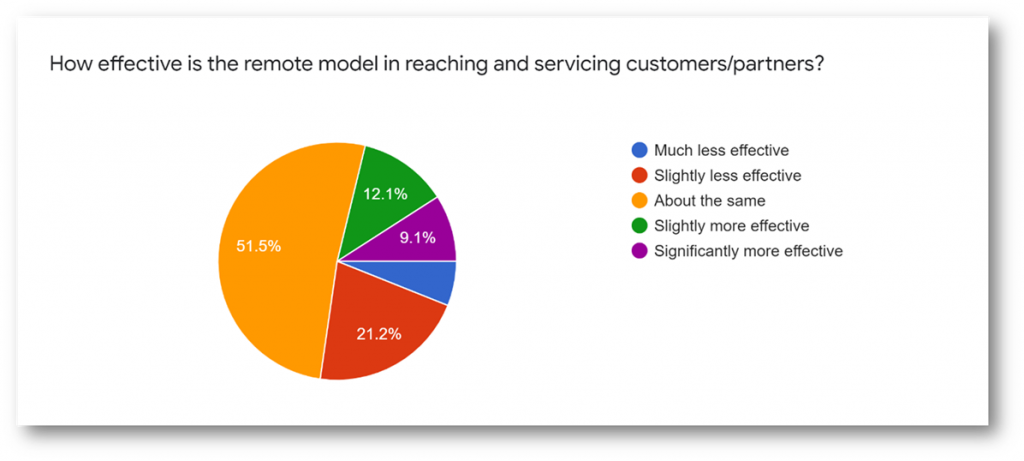
Admittedly, there were partners that said a virtual call was not nearly as valuable as a face-to-face meeting, but the efficiency of virtual meetings was that you could have a lot more meetings. In other words, a much higher quantity of lower quality. Either way, the results from this chart indicate that this is not a model that will be disappearing any time soon.
4. Technology
Throughout 2020, the two biggest areas where partners saw growth were in technologies that enabled remote working and cybersecurity.
After that, the biggest growth areas were migration to the Cloud and remote sensing/Internet of Things. All these factors indicate that we will continue to see an acceleration of technologies that enable work to be performed without the need for someone to be physically present.
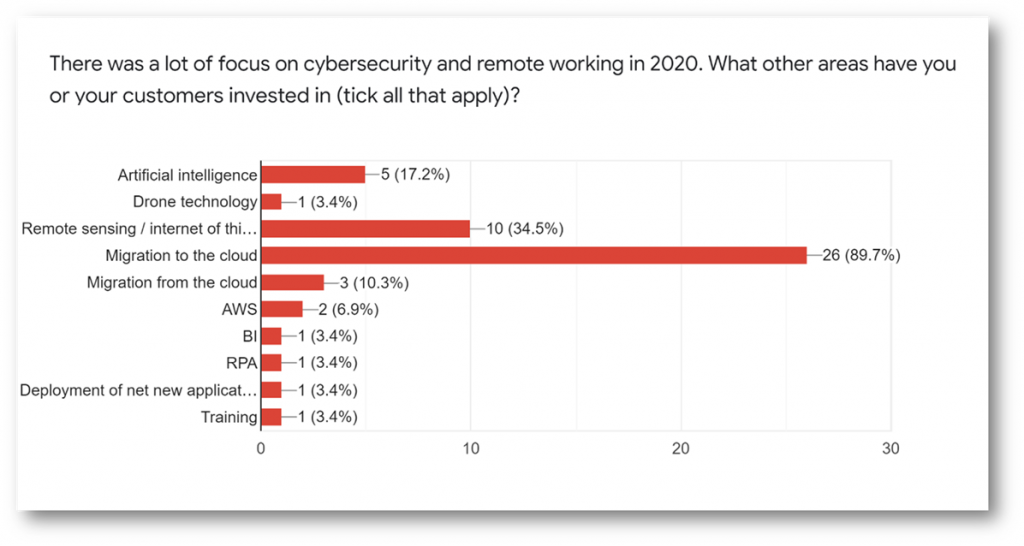
5. Business challenges
We asked participants to let us know the most challenging issues their businesses were facing today, and how they were managing these challenges. These were some of the responses:
- Finding good staff
- Finding good trainers who can deliver well online
- Lot of restructuring within partners, which has made it a challenge to get engagement with the correct people
- Supply chain issues
- The need for reinvention in light of the change in customer needs
- Managing remotely
In future discussions, we will endeavour explore some of these topics in more detail


